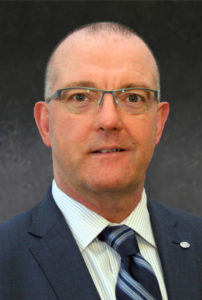With mining companies looking to replenish spent resources in many commodities, EPC and EPCM contractors’ pipelines are starting to fill up.
IM Editor Dan Gleeson spoke with Tony Morgan, President, Mining and Metals, Fluor, to find out how the contractor is continuing to win business and differentiate its offering from the rest of its peers.
International Mining: How important is securing early-stage involvement in mining projects in terms of eventually winning the major EPC/EPCM contract?
Tony Morgan: It is very important and there are some good reasons for that. If you get a contractor that is used to building significant projects and can apply the right tools in the earlier phase of the project, you will receive an aligned project in terms of the technology used, execution strategy and the techniques, such as modularisation. All of these plans will be built in at the front-end of the project and, when you go into the execution phase, the personnel executing the project will be well-versed in the strategy.
Quellaveco in Peru (pictured), South Flank in Australia, a bauxite mine in Guinea and Peñasquito in Mexico are good examples of projects where we were engaged in the early stages and helped set the projects up for success.
This isn’t to say that if one contractor starts a project, another contractor cannot come in. We have taken over and succeeded in the execution of several projects in this way. This typically occurs when the client deems that the previous contractor will be unable to perform the project’s execution phase because of the project’s size or the contractor has failed to perform in the current phase.
IM: Has the talk from mining companies of more EPC/EPCM contracts being offered with incentives/penalties that effectively share execution risk become a major trend in the industry?
TM: There’s always been a desire to include penalties and incentives in contracts. The extent to which these can be evenly applied really depends on the market, whether contractors are willing to take them on and then the client’s desire to have control over the project.
The best way to execute a project is to allocate the risk to the party that can best control the risk. If you step away from that principle, it can create inequalities in the contract.

Fluor is willing to take incentives and penalties where we have full control of the project, i.e., where we have been engaged from the start, we understand the project and have control over the execution phases. In a lot of our projects, we do that, especially using our engineering, procurement, fabrication and construction model.
In projects where we don’t have full control, there are other contractor arrangements that can be used successfully. For example, we are carrying out a project at the moment where we have an integrated project management team that combines the best personnel from both our client’s team and our team. On this project, there are significant performance incentives at the end of the project.
IM: How has the proliferation of automation, electrification and digitalisation impacted your work as an EPC/EPCM provider?
TM: It’s fair to say nobody – our clients especially – want mines coming into service in the 2020s and beyond that use the technology of 10 to 15 years ago. Automation, electrification and digitalisation are all critical to the success of these future projects.
At Fluor, we are investing a great deal in developing our automation and digitalisation expertise. We are working with IBM on several efforts around predictive analytics. We also have a section of the company focused purely on innovation. We are bringing innovative and automated solutions to projects, including some active and passive sensing technologies used to help safeguard personnel in the field and track equipment and materials.
One of the solutions we have developed is Safety Pin, which allows us to know where every worker is and to notify workers of areas that are not safe to enter.
Innovation is a differentiator for us as we have been adopting various innovations on a number of projects. We know what works and what doesn’t. Others talk about innovation without having applied innovations to large-scale projects.
IM: Where is Fluor seeing most demand for its services on a regional and commodity basis?
TM: We have projects globally, including bauxite and diamond projects in Africa, iron ore projects in Australia and gold projects in Mexico. Copper projects in South America are extremely active right now. We are executing a number of projects in South America – Quellaveco and Spence being two of the largest – and are also engaged on a number of other ones.
This article is part of a larger Q&A to be featured in the December print issue of International Mining











